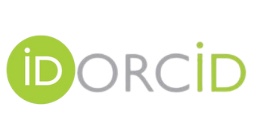Caracterización del síndrome coronario agudo sin onda q en la unidad de cuidados intensivos
Keywords:
cuidados intensivos, coronariopatiaAbstract
Fueron caracterizados 50 pacientes atendidos en la unidad de cuidados intensivos con diagn óstico de síndrome coronario agudo sin onda Q patológica (SCANQ), que incluía los diagnósticos de angina inestable, infarto agudo del miocardio con y sin supradesnivel del st que no desarrollaron onda Q, a los que se les realizóangiografía y electrocardiograma entre el 28 de febrero del 2004 hasta el 1ro de marzo del 2006 Los resultados mostraron un predominio del sexo masculino y mayores de 60 años. El 70% tuvieron alteraciones electrocardiográficas; el s-t negativo, el s-t positivo y la onda t invertida fueron las más frecuentes. El 90% de los pacientes tuvo lesiones angiográficas coronarias, la enfermedad de dos vasos fue la predominante, seguida por la de uno y de tres vasos respectivamente. Se recomienda abordar estas entidades como integrantes de un mismo síndrome con el fin de encauzar las pruebas diagnósticas y aplicar la terapéutica más eficaz.
Downloads
References
Ministerio de Salud Pública. Anuario Estadístico de Cuba (monografía en línea). 2005. Acceso: 12 junio 2007.
Disponible en:
Joint European Society of Cardiology, American College of Cardiology Committee. Myocardial infarction redefined. Eur Heart J 2000; 21: 1502-13.
Zareba W, Moss AJ, Raubertas RF. Risk of subsequent cardiac events in stable convalescing patients after first non-Q-wave and Q-wave myocardial infarction. Coron Artery Dis 2003; 5:1009-18.
Kanojia A, Kasliwal R, Seth A, Bhandari S, Kler TS, Bhatia ML. Clinical and
coronary arteriographic features and outcome of recent onset unstable angina. Int J Cardiol 2003; 39:173-80.
De Wood MA, Stifter WF, Simpson CS. Coronary arteriographic findings soon after non-Q wave myocardial infarction. N Engl J Med 1986; 315:417-23.
Braunwald E, Antman EM, Beasley JW. ACC/AHA guidelines for the management of patients with unstable angina/non-ST segment elevation myocardial infarction: a report of the American College of Cardiology/American Heart Association Task Force on Practice Guidelines. J Am Coll Cardiol. 2004; 36:970-1062.
Lee RT, Libby P. The unstable atheroma. Arterioscler Thromb Vasc Biol 2003; 17:1859-67.
Braunwald E, Mark DB, Jones RH. Unstable angina: diagnosis and management Rockville, MD: Agency for Health Care Policy and Research and the National Heart, Lung, and Blood Institute, US Public Health Service, US Department of Health and Human Services. 2002:1. AHCPR Publication 94-0602.
National Center for Health Statistics. Detailed diagnoses and procedures: National Hospital Discharge Survey, 2003. Hyattsville, MD: National Center for Health Statistics. 2003.
Jayes RL, Beshansky JR, D’Agostino RB. Do patients’ coronary risk factor reports predict acute cardiac ischemia in the emergency department?: a multicenter study. J Clin Epidemiol 2003; 45:621-6.
Scanlon P, Faxon D, Audet A. ACC/AHA Guidelines for coronary angiography: a report of the American College of Cardiology/American Heart Association Task Force on practice guidelines. J Am Coll Cardiol 2003; 33:1756-824.
Horwitz LD, Groves BM, editors. Signs and symptoms in Cardiology. Philadelphia: JB Lippincott; 2004.
Mayer S, Hillis LD. Prinzmetal's angina. Clin Cardiol 2000; 21:243.
The platelet receptor inhibition for ischemic syndrome management in patients limited by unstable signs and symptoms (PRISM-PLUS) trial investigators: inhibition 8 of the platelet glycoprotein IIb/IIIa receptor with tirofiban in unstable angina and non-Q-wave myocardial infarction. N Engl J Med. 1998; 338:1488-97.
Cannon CP, McCabe CH, Stone PH. The electrocardiogram predicts one-year outcome of patients with unstable angina and non-Q wave myocardial infarction: results of the TIMI III Registry ECG Ancillary Study. J Am Coll Cardiol 2002; 30:133-40.
Savonitto S, Ardissino D, Granger CB. Prognostic value of the admission
electrocardiogram in acute coronary syndromes. JAMA 2004; 281:707-13.
Hyde TA, French JK, Wong CK. Four-year survival of patients with acute coronary syndromes without ST-segment elevation and prognostic significance of 0.5-mm STsegment depression. Am J Cardiol 2004; 84:379-85.
Papapietro SE, Niess GS, Paine TD. Transient electrocardiographic changes in patients with unstable angina: relation to coronary arterial anatomy. Am J Cardiol 2003; 46:28-33.
Pryor DB, Shaw L, McCants CB. Value of the history and physical in identifying patients at increased risk for coronary artery disease. Ann Int Med 1999; 118:81-90.
Langer A, Freeman MR, Armstrong PW. ST segment shift in unstable angina: pathophysiology and association with coronary anatomy and hospital outcome. J Am Coll Cardiol 2003; 13: 1.495-502.
Kanojia A, Kasliwal R, Seth A, Bhandari S, Kler TS, Bhatia ML. Clinical and
coronary arteriographic features and outcome of recent onset unstable angina. Int J Cardiol 2003; 39:173-80.
Yusuf S, Zucker D, Peduzzi P. Effect of coronary artery bypass graft surgery on survival: overview of 10-year results from randomized trials by the Coronary Artery Bypass Graft Surgery Trialists Collaboration. Lancet. 1994; 344:563–70.
Published
How to Cite
Issue
Section
License
Medimay protects copyright from the very first moment the submission is made, but upon publication it assumes a Creative Commons 4.0 (cc-by-nc) license, which allows the use of the work to share (copy and redistribute the material in any medium or format) and adapt (remix, transform and build from the material) as long as exclusive mention is made of the publication in the journal as a primary source, prohibiting its commercialization. The author always retains his/her right.














 This site is licensed under a
This site is licensed under a